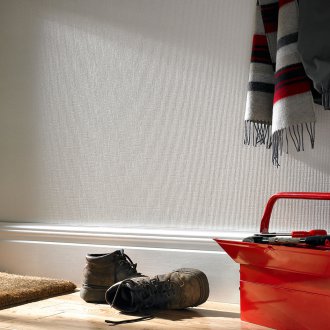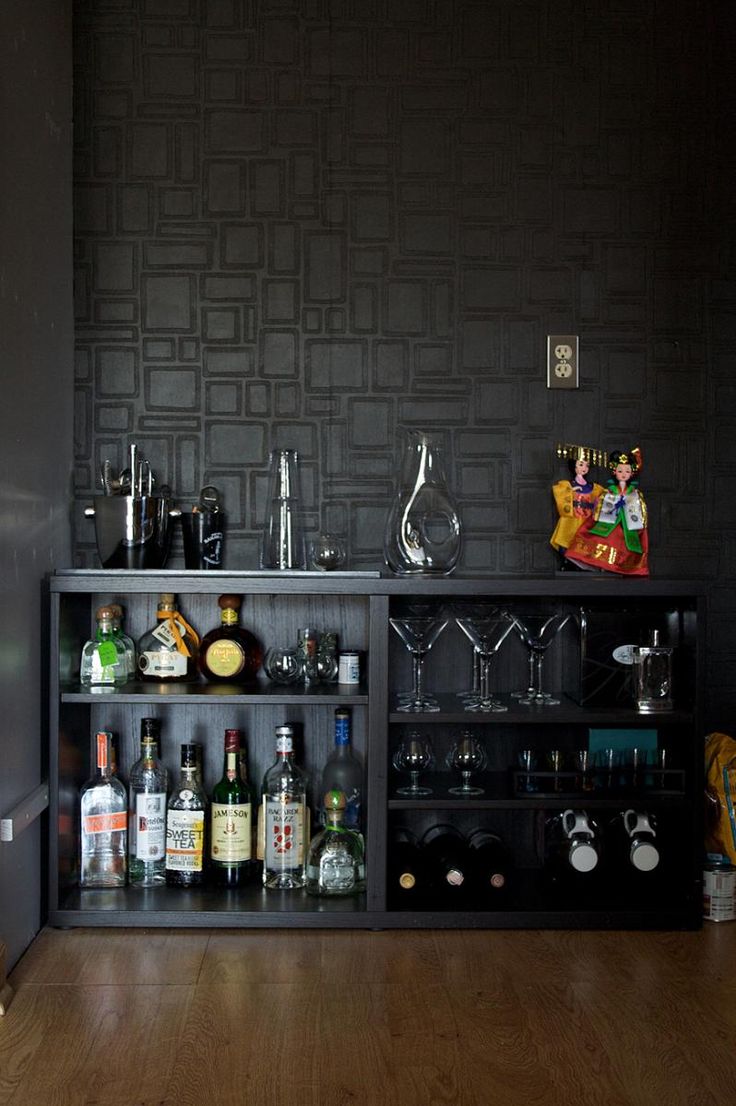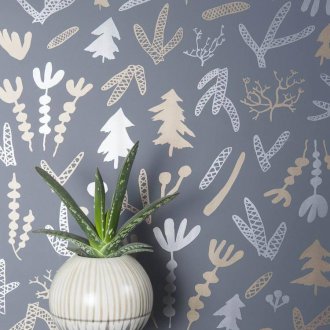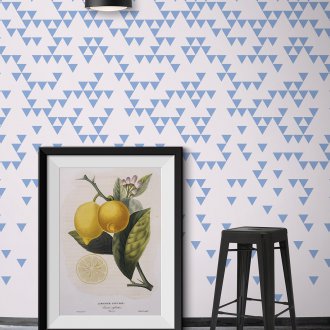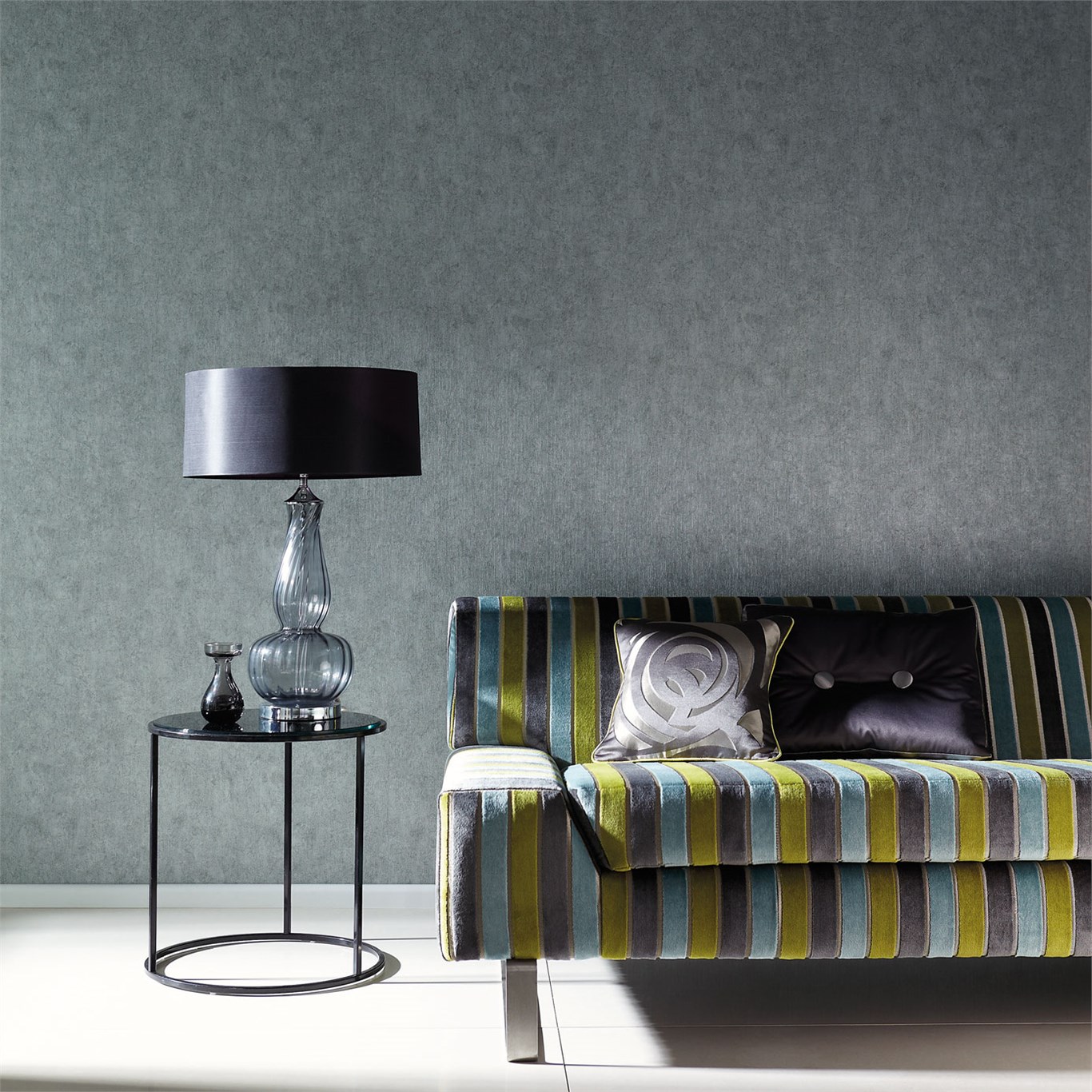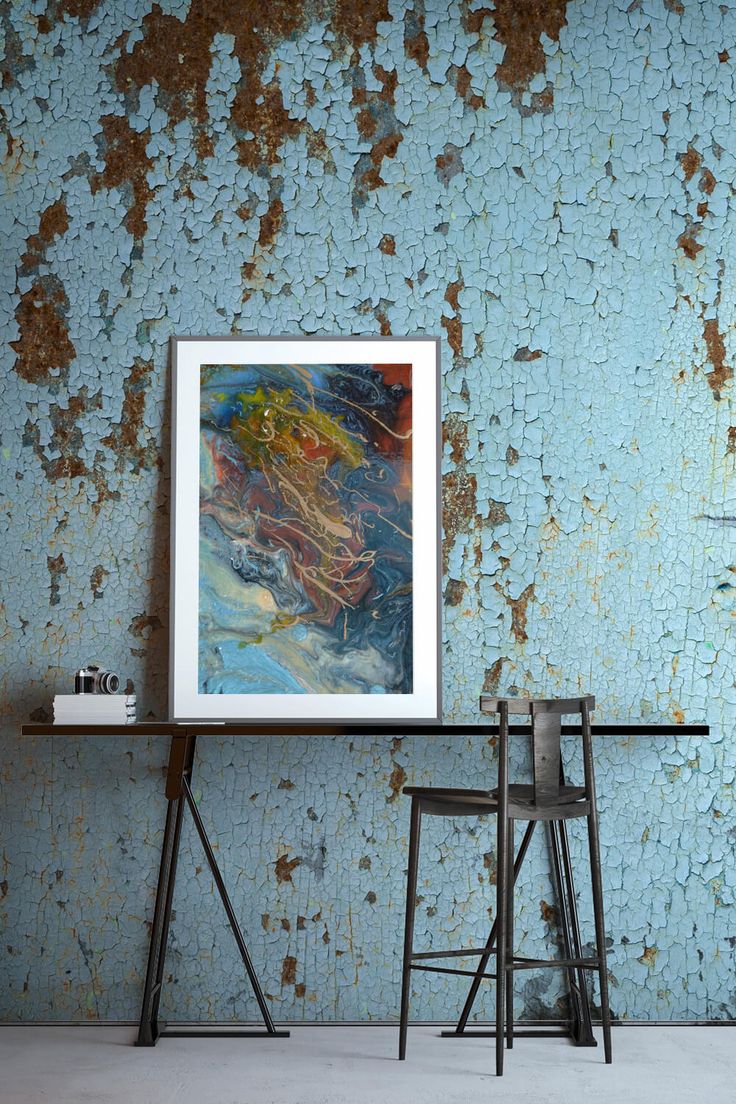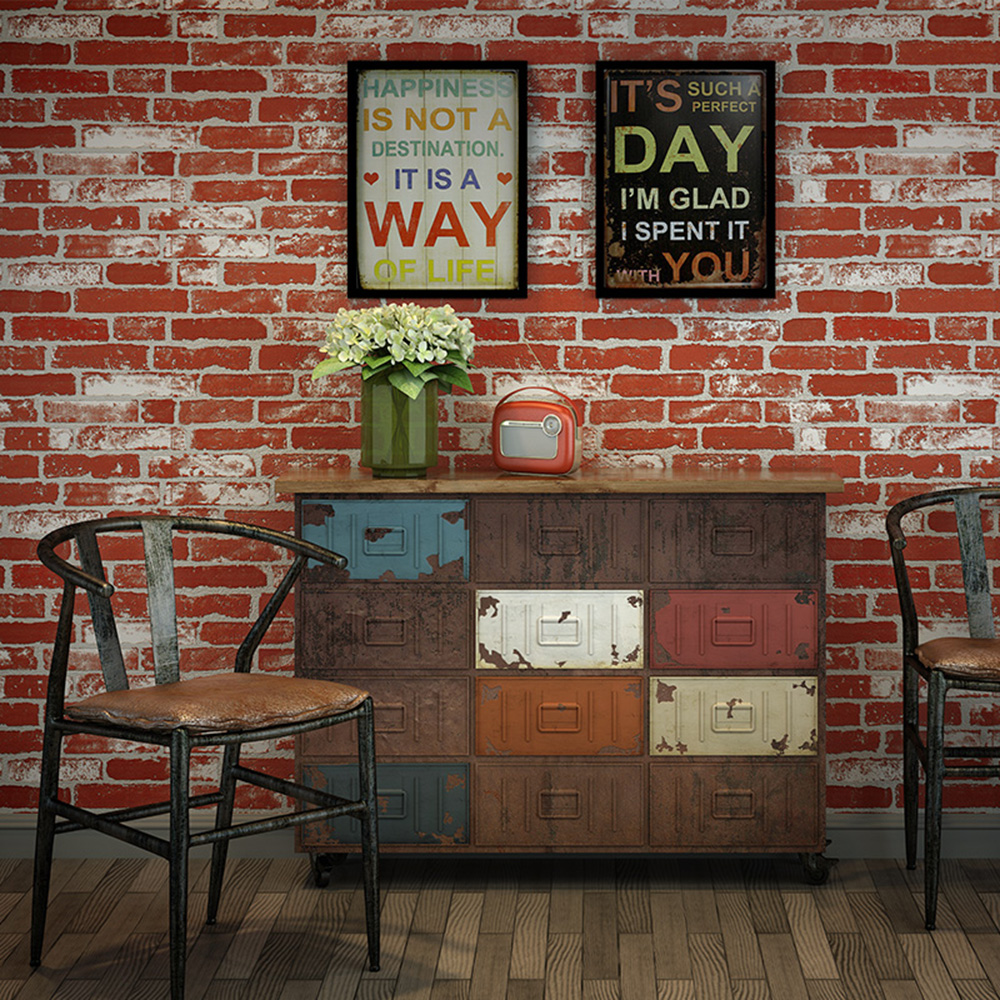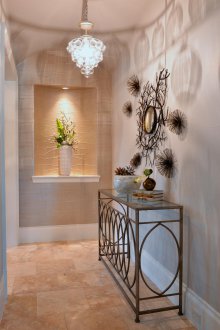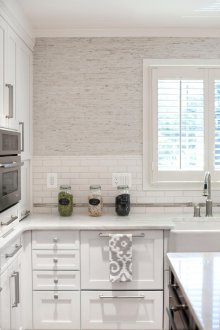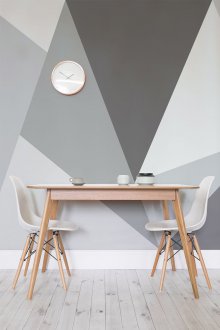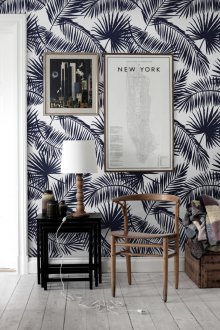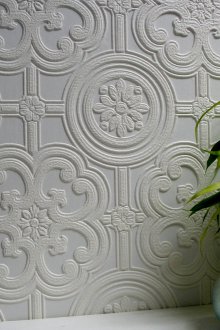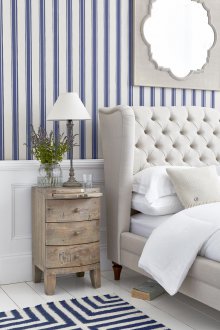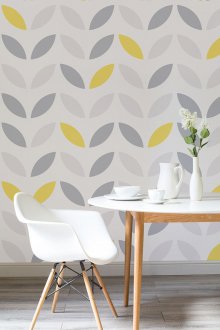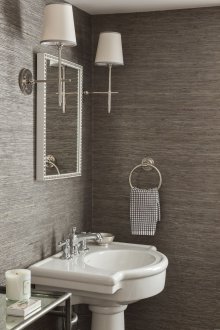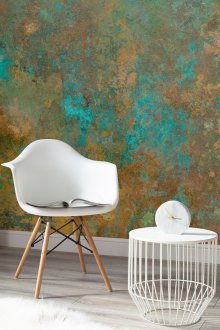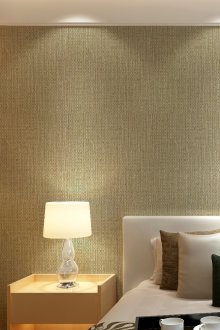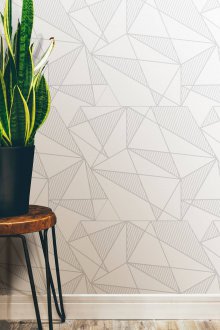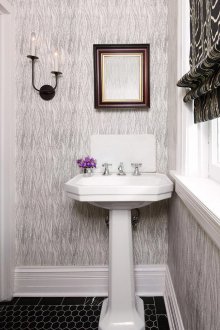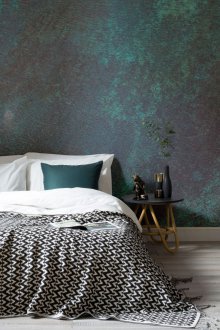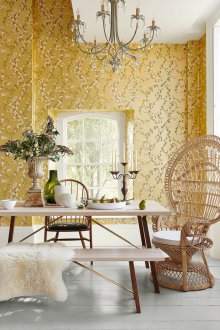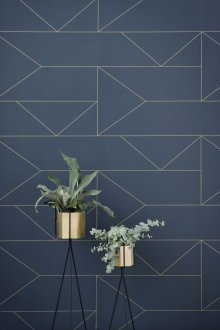Textured wallpaper: types and their features (27 photos)
Content
Textured are called wallpapers that have a deep relief coating. Most often they are monophonic, although there are also with multi-color patterns. This wall decoration material is intended for painting. Most types of these wallpapers withstand 5-15 layers of paint. This means that having glued them once, you will reduce the cost of redecorating. It will be possible to refresh the interior at any time by buying just a can of water-dispersion paint.
Varieties of textured wallpaper
Textured wallpaper is difficult to attribute to any particular kind. This name combines many decorative coatings on the surface of which there is embossing. Embossed wallpapers can be made of different materials. Let's talk about this in more detail.
Paper
By the name it is easy to understand that this type of wallpaper is made of paper. Such wallcoverings are very popular due to their low cost. Unlike other options, they do not differ in high wear resistance, but with careful use they will last more than one year. To create a relief, such wallpapers are layered, so they are more durable than standard paper coatings for walls. Also, these textured wallpapers can withstand painting. The pluses include the simplicity of the gluing process.
According to the texture of paper wallpaper are of two types:
- Structural;
- Coarse fibrous.
The first are usually made of two layers of paper, but there are three-layer models. They are a little more expensive, but more durable and voluminous. With their help, you can mask small irregularities in the wall. Making such wallpapers is simple: they peel off in stripes. The last layer can be left and used as a basis for subsequent pasting. In the production process, paper sheets are processed with special solutions, which makes them resistant to moisture and fading in the sun.
In fact, the second is 2 layers of paper, the relief of which is created using pressed sawdust. Sawdust is between the sheets, forming a grainy, heterogeneous texture. The more wood particles used, the more expressive the relief.
Non-woven
Non-woven wallpaper is a finishing material, the basis of which is made of non-woven fabric. The outer coating may be vinyl or non-woven. The top layer is dense and reliable (especially after painting), so the texture pattern is almost impossible to damage.
Advantages of non-woven wallpaper:
- High wear resistance and resistance to mechanical damage.
- Good elasticity and strength, due to which non-woven wallpaper can be used in new buildings. During shrinkage processes, cracks or bumps may form on the walls. Conventional wallpaper will suffer, and this type of textured wallpaper will not lose its original appearance.
- Textured wallpaper for painting is most often just made of non-woven fabric. The color of the room can be changed up to 15 times!
- A huge variety of textures. Including imitation of various finishing materials.
The only drawback of non-woven wallpaper is their rather high cost.
Vinyl
Vinyl wallpapers consist of 2 layers: main and external. The base can be made of paper or non-woven. The non-woven base is more practical and easier to work with. It is easy to glue because glue is applied to the wall, not to the canvas.Also, such a substrate does not fade under the influence of sunlight, does not stretch and does not swell due to temperature changes or excess moisture, but the paper base is characterized by problems of shrinkage and swelling.
The top layer is made of foamed or thick vinyl. The first option is more common. This layer is pleasant to the touch, beautiful and resistant to moisture, but such vinyl wallpapers easily lose their appearance due to the fragility of foamed vinyl. The surface is very easy to damage: accidentally hit with a fingernail or furniture. So for pet owners this option is not at all suitable.
Manufacturers offer an alternative - thick vinyl. It is more durable and wear-resistant, stretches less and is more practical, but material resistant to damage does not look so attractive.
The relief of vinyl wallpaper is not pronounced. The rough surface looks elegant and neat. On sale there are both monophonic wallpapers, and models with a pattern. Most often, products are neutral white or gray, but they can be painted with water-based paints without damaging the delicate surface. Painting of textured wallpaper can be carried out up to 7 times.
Cullet
The relief structure is given to this environmentally friendly material due to the interweaving of glass threads. Features of this type of textured wallpaper:
- Durability. Manufacturers guarantee that cullets, depending on operating conditions, will last from 20 to 30 years.
- Strength. High wear resistance is one of the main distinguishing features. Thanks to this, such wallpapers are perfect for the office. Repair can not be remembered for many years.
- Security. The material does not contain toxic substances, does not smoke and does not burn during a fire.
- Ease of care. This variety is not afraid of moisture and does not change under the influence of detergents.
- A wide variety of textures. Relief drawings are presented in a variety of options: Christmas trees, cobwebs, various geometric shapes, etc.
- Suitability for painting. Traditionally, these wallpapers are beige, white or gray, but the color is easy to change using water-based paint.
The downside of cullets is their high price. However, it is worth considering that you will pay this amount for 20 years of using the coverage. Also a disadvantage is the difficulty of removing from the wall after the end of the operational period, but this moment will come soon.
Liquid
This finishing material is more like plaster than ordinary roll wallpaper, but cellulose is not used for production of cement and lime. The structure of liquid wallpaper is a dry loose mixture, which is diluted with water before application. Like plaster, liquid wallpaper is applied to the walls or ceiling with a spatula. The advantage is that with this method of decoration there are no seams. Whereas sticking simple roll wallpaper is impossible without traces of joints.
However, liquid wallpaper only resembles textured appearance. The material forms an absolutely flat surface that only looks embossed. This is due to the fact that the composition contains fibers that differ in color and composition. This type of wall covering does not need coloring, since you can preselect a mixture of the desired shade. However, if necessary, such wallpaper will be painted.
Natural
There are many natural wallpapers:
- Vegetable - from papyrus, flax, stalks of reeds, algae, straw.
- Wooden - made of bamboo, palm trees, bark of cork oak, birch.
- Textile - made of silk, genuine leather, velor.
For the manufacture of such finishing materials, natural raw materials are used. Natural beauty is the main advantage of natural wallpaper. This type of coating is environmentally friendly and safe. The disadvantage is the high cost, but such wallpapers are rarely used for the entire area of the room, with their help they usually make an accent wall or part of it.
Textured wallpaper in the interior
To create a harmonious atmosphere and not to be mistaken with the choice of wallpaper with a pronounced relief, some nuances should be taken into account:
- Cloths with texture visually reduce the size of the room, so do not use them in the interior of small rooms. Or use them partially.
- Combine regular plain and embossed wallpapers.
- Consider the features of finishing materials when choosing rooms for gluing. Some coatings deteriorate due to external influences.
- If you want to combine several different types of textured wallpapers in the interior of one room, think in advance whether this is possible. Difficulties can arise at the junction of wall coverings.
Pay attention to wallpapers that simulate different materials. For example, a brick. Such canvases can be used to create an interior in the style of country, loft or modern. Using this material, you can focus on certain areas in the room. Brick wallpaper will look great in the kitchen. They can be glued instead of an apron or a dining area can be distinguished with their help. In the living room, a wallpaper with an imitation of brickwork will look gorgeous next to the fireplace. They can decorate ledges and niches. Similarly, you can use wallpaper under the stone.
Imitation wood is suitable for natural interiors. Walls with this design will be appropriate for Provence or country. Textured leather-like wallpapers will find their place in the interiors of modern styles, while plaster imitation is a great option for a classic design. Wall-paper with the texture of plaster can be of different shades: gray, brown, golden, blue, emerald, etc.
In the bedroom, give preference to coatings with a slightly pronounced texture, so as not to burden the space. Volumetric drawings can only be used as accents in the bedside zone. Choose colors light, slightly muffled. In the living room, a patterned relief in the form of geometric patterns or volumetric ornaments does not hurt. In the kitchen, place textured wallpapers in the dining area or cooking zone, but note that they will have to be regularly looked after and cleaned of fat.
As you can see, the assortment of embossed wallpapers is quite large. And designers are happy to use this variety to create a stylish and sophisticated look. With the help of correctly selected textured wallpaper, you can quickly turn an ordinary-looking room into an unforgettable room.
